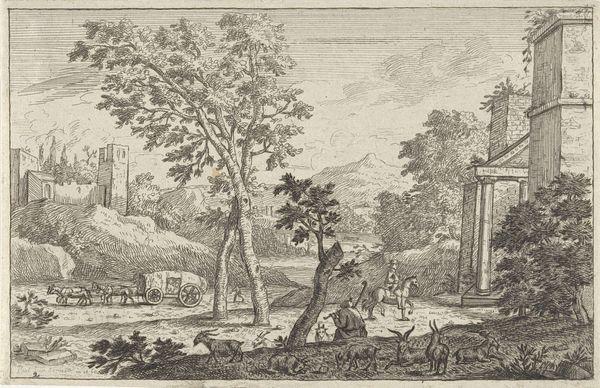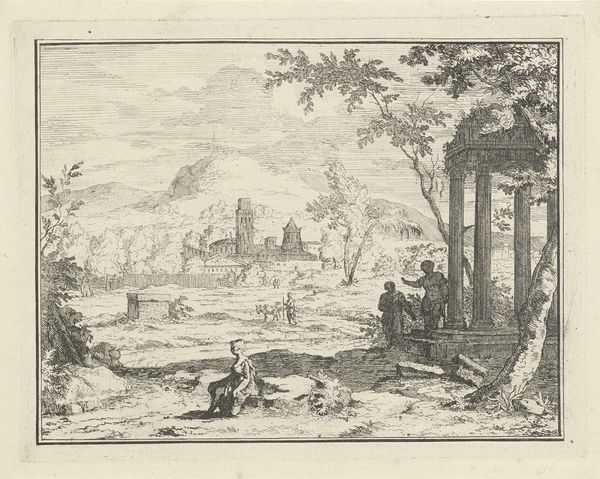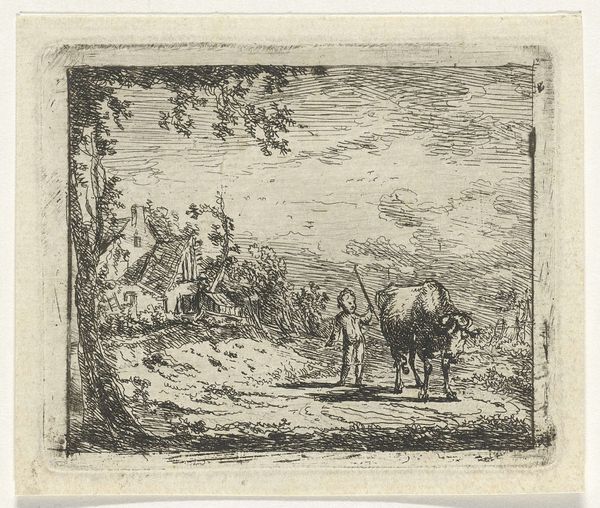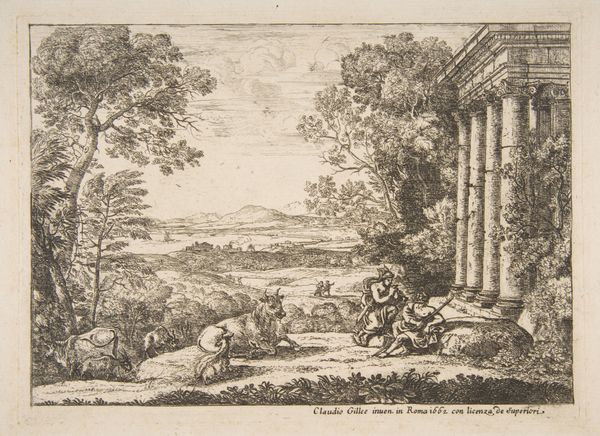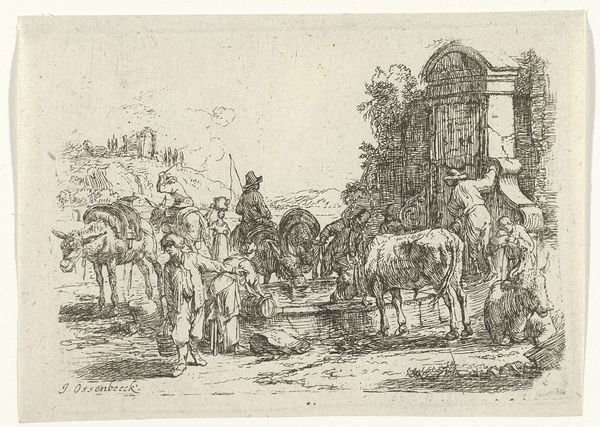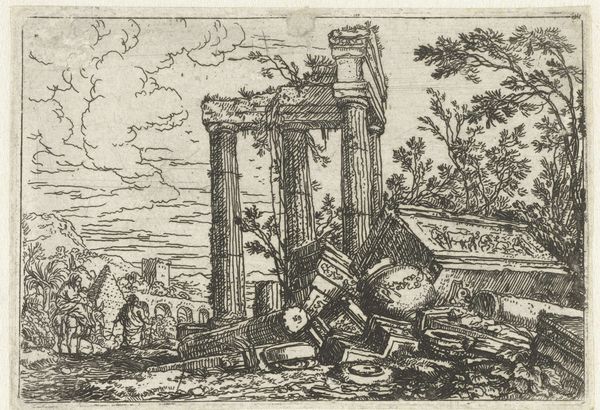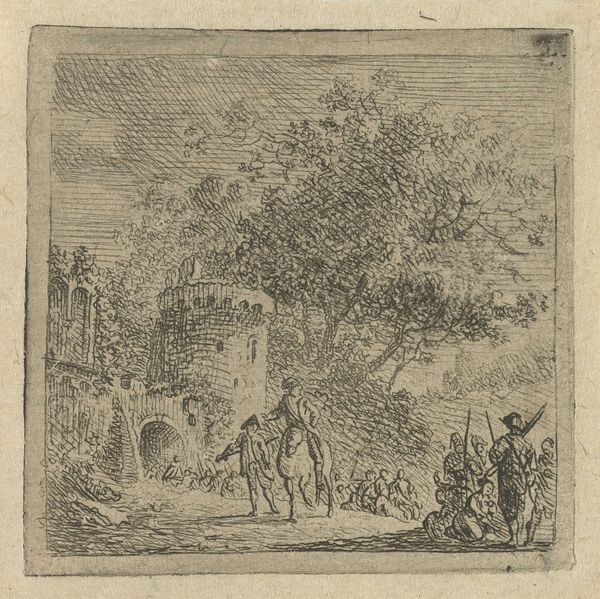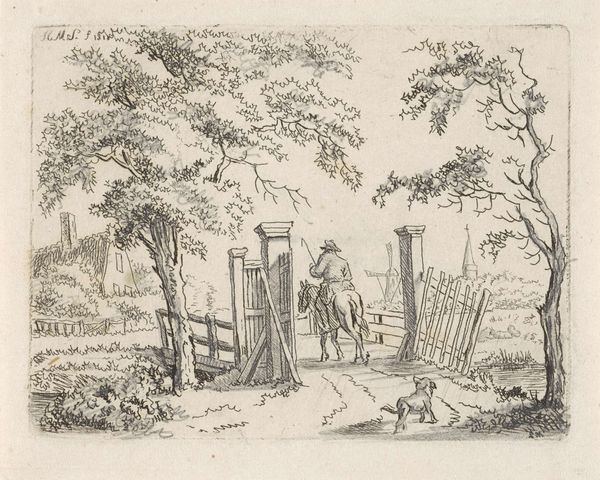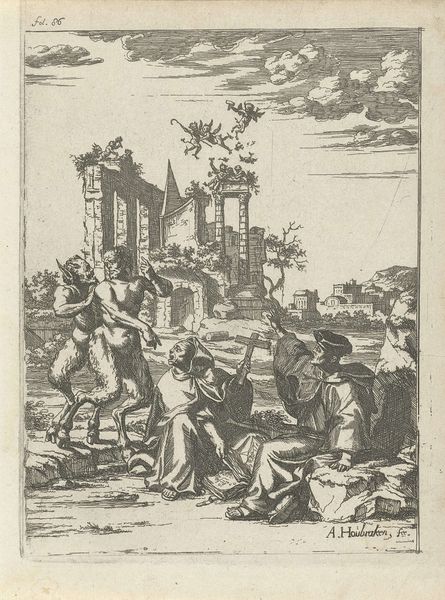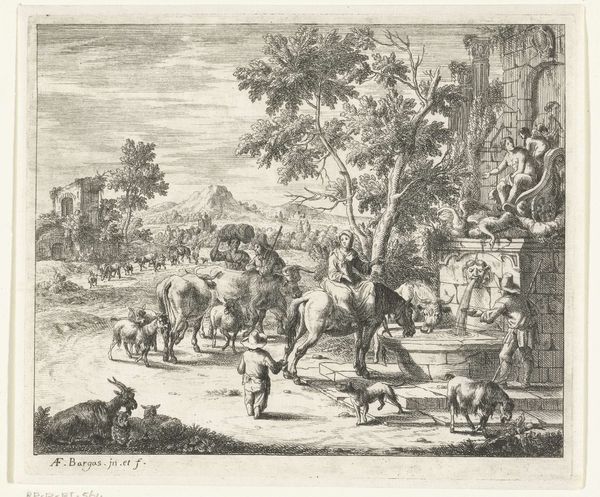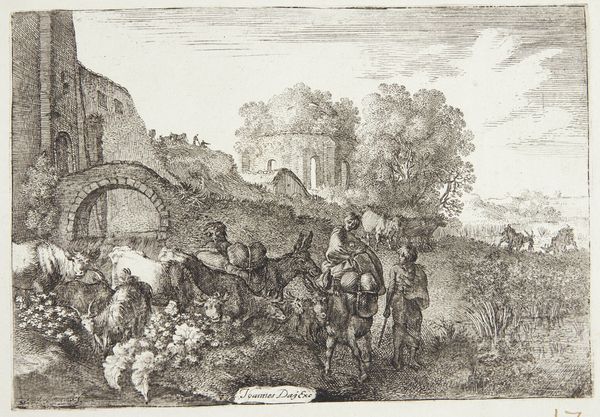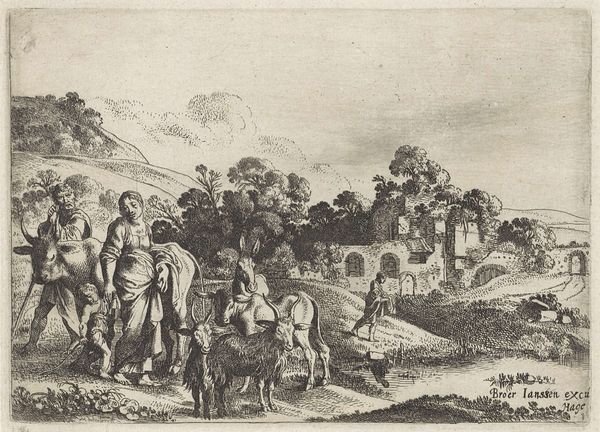
etching
#
baroque
#
etching
#
landscape
#
genre-painting
Dimensions: height 121 mm, width 124 mm
Copyright: Rijks Museum: Open Domain
Editor: This etching by Adriaen van de Velde from 1653, "Resting Hunters by a Ruin," has a surprisingly tranquil feel despite the crumbling architecture. What strikes me is the way the ruin almost overshadows the figures, who seem quite small against the landscape. How do you interpret this work? Curator: I see a potent juxtaposition of past and present. The ruin, rendered so meticulously, speaks to a lost grandeur, a vanished civilization. Consider what that image would invoke for a 17th-century audience, fresh from classical studies; the emotional weight of empires gone by. Do you notice the figures grouped in the foreground? Editor: Yes, they appear to be taking a rest, with their animals. Curator: Exactly. These "resting hunters," the seemingly mundane figures, become symbols of continuity, of life persisting amidst decay. They suggest a negotiation with the past, using its remnants to shape the present. Think of what the landscape represents, not just physically but psychologically: a space marked by memory and change. The ruins even look somewhat protective, don't they? Editor: That's a fresh perspective. The ruin as protective, as part of the landscape's evolving narrative, not just a symbol of decay. Curator: Indeed. And remember that visual symbols evolve meaning with time; while to us this might just be an evocative scene, for someone then, the image carried heavier cultural baggage about identity and time. Editor: It's fascinating how van de Velde layers those meanings, inviting us to reflect on time's passage and the endurance of everyday life. Thanks for pointing out those symbols. Curator: My pleasure. It is always rewarding to understand how imagery influences memory.
Comments
No comments
Be the first to comment and join the conversation on the ultimate creative platform.
